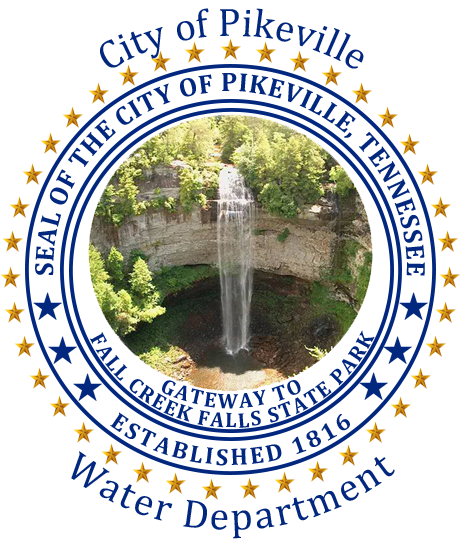City of Pikeville
Water Department

Backflow Prevention
What Does it Mean to You?
Every time you fill a glass with water from the tap, prepare a meal, or take a bath, you take for granted that the water will always be clean, pure, and healthy.
Occasionally, situations occur outside of our control that can jeopardize the quality of your drinking water. A very common occurrence in a water distribution system is the temporary loss of pressure due to the breakage of a water supply pipe or water main.
When these situations occur, conditions are present that can allow the backflow of pollutants or contaminants into the water system and threaten the purity of our drinking water system.
Water distribution systems are designed with the intention of the water flowing in a certain direction from the distribution system to the consumer. However, hydraulic conditions within the system may deviate from the “normal” conditions, causing water to flow in the opposite direction. Therefore, it is possible (and common) for water to flow in the opposite direction in unprotected systems. This is called backflow. There are two forms of backflow:
-
- Backsiphonage – usually caused by a loss of pressure in the drinking water system.
- Backpressure – caused by pumps, piping systems elevation, or thermal expansion from a heat source.
Backflow can cause our drinking water to become polluted or contaminated. Pollution reduces the quality of drinking water. It does not create a public health hazard, but adversely affects the aesthetics of taste, odor, and appearance.
Yes, the backflow of undesirable elements into the drinking water system can be prevented. A cross-connection is a physical connection between the water supply and any source of possible pollution or contamination. By eliminating or controlling all actual or potential cross-connections, the public drinking water system will be protected within the city water main system and within buildings.
Simple plumbing changes can easily eliminate many cross-connections. However, where this is not possible, backflow prevention assemblies are installed to protect the water supply.
The type of backflow prevention assembly required is determined by the degree of hazard. In other words, the severity of the actual or potential hazard will dictate what level of protection is necessary to adequately protect the drinking water.
For temporary cross-connections, such as a garden hose, an inexpensive hose bib vacuum breaker is acceptable.


First, you should determine if there are potential cross-connections in your home or business. The local plumbing inspector or water provider can assist in this determination.
Next, you should investigate alternative for eliminating or protecting against all actual or potential cross-connections.
After determining the necessary method of cross-connection control, the appropriate plumbing changes or the addition of a mechanical backflow prevention assembly should be made.
Local codes or government regulations are used to determine what specific backflow prevention assemblies are required for each application. Your local water provider should always be consulted prior to purchasing and installing any backflow prevention assembly.
![]() City of Pikeville
City of Pikeville
25 Municipal Drive
Pikeville, Tennessee 37367

